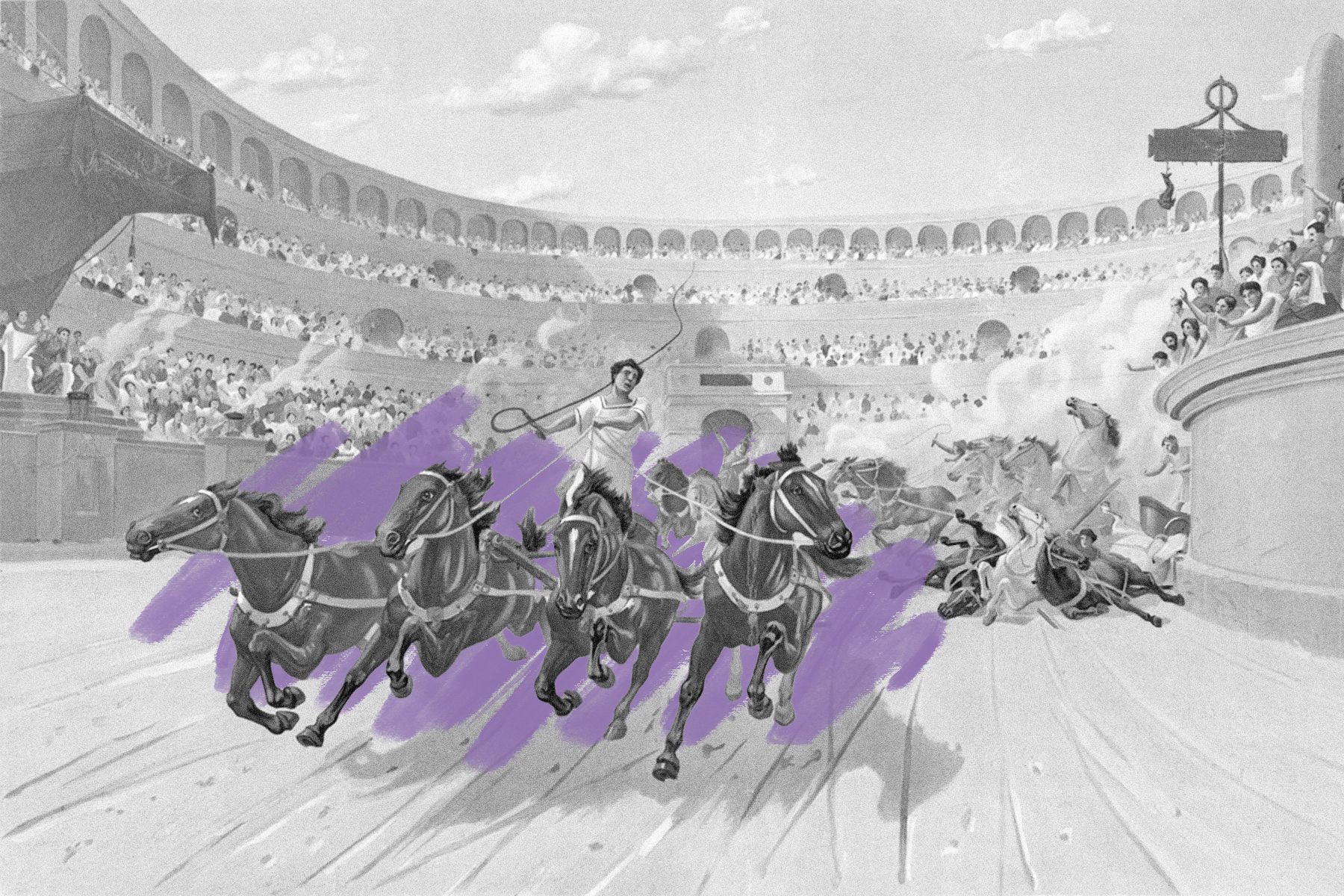Rowdy sports fans nearly overthrew a Roman emperor.
Ancient Romans were fanatical about chariot races, and were devoted to one of four teams: the Reds, Whites, Greens, or Blues. After the fall of the Western Roman Empire in 476 CE, the four teams consolidated into two, the Greens and Blues. The rivalry was more potent than ever, and often led to violence. In Constantinople (modern-day Istanbul), the capital of the Eastern Roman Empire, competitions took place at the local hippodrome, an arena with a capacity of more than 60,000. In 532 CE, the bitter sports rivals, enraged by some recent tax increases, found a common enemy in Emperor Justinian I. After some particularly nasty fighting broke out at the hippodrome, Justinian, a longtime Blues fan, put his foot down, relinquished his fandom, and sent for the military. He sentenced seven leaders in the fighting to death, but two of them, one fan from each team, survived when the hanging scaffolding broke.
At the next big chariot race, the Greens were resentful of Justinian’s longtime preference for the Blues, the Blues were angry that Justinian was no longer a fan, and both demanded that the two riot leaders be spared. Both teams started chanting “nika,” meaning “win,” but they were cheering less for the charioteers and more for a violent revolt against the emperor. The crowd poured out into the streets, and the ensuing riot went on for five days. On the last day, the rioters returned to the hippodrome and attempted to install a new leader. Justinian was ready to retreat, but his wife, Theodora, convinced him to hold his ground. Troops stormed the hippodrome and massacred the crowd, while some soldiers guarded the exits to make sure nobody could escape. The death toll was around 30,000, or around 10% of the city’s population. Justinian reigned for another 33 years, until 565 CE.







